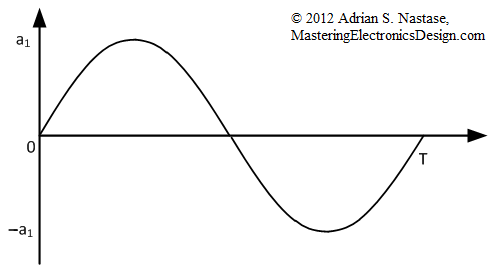This comment was left in another thread, a thread that I started. It brings up the concept of symmetry. Personally, I think this is a gross abuse of the word symmetry. That is because I don't see any symmetry in the particular physical phenomenon that is being used as an example. Since Dog-One thinks that symmetry is a "first" consideration, it is worth discussing.
Let me be very specific and see what kind of comments I can get in return. I would prefer to have calm, rational, well-thought-out comments but you get what you get.
All electricity is hot in the sense that it has the ability to heat things up because of the EMF or energy present. How do we know there is energy present? Because electricity is moving electrons and moving electrons, in the first case, create a magnetic field which exerts a force and can do work. In the second case, the moving electrons have kinetic energy and the kinetic energy will be transformed into heat in any circuit element that contains resistance. Symmetry, as used in this comment, would imply there is something called "cold" that exists separate from "heat", whereas "cold" is simply a lesser degree of "heat". Cold and heat are actually terms that describe the same thing, not terms that describe opposites.
This comes from the established work of Kepler, Kelvin, Boyle and other scientists of the past. It is why there is such a thing as absolute zero, temperature wise. What we are looking for, if I may be so bold, is something that demonstrates that these proven concepts are in fact wrong.
I don't think the notion of symmetry makes the grade when in comes to proving something new. There are other areas where symmetry makes sense. I just don't think it makes any sense in this context. This context, specifically, is the context of temperature effects of electricity.
So, here is the challenge. If you think you have a newer or better idea when it comes to symmetry, this is your thread. Convince me that I'm wrong. It would be best if you can back your argument up with a demonstration circuit or something that I can build, but that is not likely to stop anyone that reads this forum.
Good luck, and thank you for offering up your thoughts.
Let me be very specific and see what kind of comments I can get in return. I would prefer to have calm, rational, well-thought-out comments but you get what you get.
All electricity is hot in the sense that it has the ability to heat things up because of the EMF or energy present. How do we know there is energy present? Because electricity is moving electrons and moving electrons, in the first case, create a magnetic field which exerts a force and can do work. In the second case, the moving electrons have kinetic energy and the kinetic energy will be transformed into heat in any circuit element that contains resistance. Symmetry, as used in this comment, would imply there is something called "cold" that exists separate from "heat", whereas "cold" is simply a lesser degree of "heat". Cold and heat are actually terms that describe the same thing, not terms that describe opposites.
This comes from the established work of Kepler, Kelvin, Boyle and other scientists of the past. It is why there is such a thing as absolute zero, temperature wise. What we are looking for, if I may be so bold, is something that demonstrates that these proven concepts are in fact wrong.
I don't think the notion of symmetry makes the grade when in comes to proving something new. There are other areas where symmetry makes sense. I just don't think it makes any sense in this context. This context, specifically, is the context of temperature effects of electricity.
So, here is the challenge. If you think you have a newer or better idea when it comes to symmetry, this is your thread. Convince me that I'm wrong. It would be best if you can back your argument up with a demonstration circuit or something that I can build, but that is not likely to stop anyone that reads this forum.
Good luck, and thank you for offering up your thoughts.
Originally posted by Dog-One
View Post





 , i think mathematical symmetry is faraway from physical symmetry... the difference between the two is what made a lots of erroneous theories that unfortunately are still taught at schools.. take a brief example from wikipedia about Symmetry in mathematics :
, i think mathematical symmetry is faraway from physical symmetry... the difference between the two is what made a lots of erroneous theories that unfortunately are still taught at schools.. take a brief example from wikipedia about Symmetry in mathematics : 


Comment